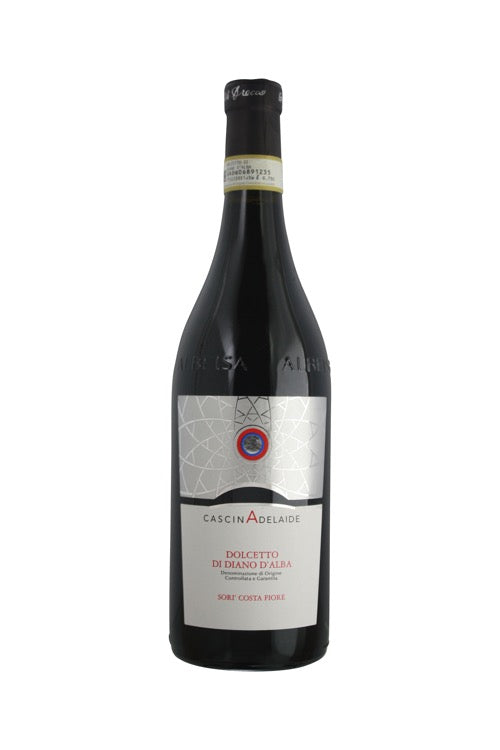1
/
of
1
Cascina Adelaide Dolcetto Di Diano d'Alba - 2022(750ml)
Cascina Adelaide Dolcetto Di Diano d'Alba - 2022(750ml)
Regular price
$19.99
Sale price
$19.99
Regular price
$23.99
Unit price
/
per
It has an intese but vivid violet color, great vintage for the dolcetto wines which developed on the nose an intricated plot made by cherry, red currant, violet and iris flowers. On the plate hits with menthol hints and smooth tannins providing a very rich sapidity and an unexpected minerality.
Share :

- varietal
- Region
- Sub - Region
- Type
- Reviews
A popular red wine producing grape native to Piedmont, Italy, known for making wines that are best consumed in their youth. It’s name, Dolcetto or “little sweet one”, is more a reference to its relatively low acidity (compared with the likes of Barbera) rather than due to any residual sugar, as it is generally fermented dry. The grape typically makes wines light in body, due to its low tannin, expressing a fragrant nose of soft, round fruit.
Along with Tuscany, Piedmont is responsible for most of Italy’s greatest wines. Here, Nebbiolo is the king of grapes with the DOCGs of Barolo and Barbaresco supplying a significant amount of the finest examples. Less expensive, but good value Nebbiolos are made within the larger Langhe DOC which Barolo and Barbaresco are both situated in. Barbera and Dolcetto are the region's other important red grapes. Moscato (Muscat) is the most popular white grape, most of which gets used in making Spumante and Frizzante (semi-sparkling) wines, notably those made in and around the town of Asti. Meanwhile, the region's most popular still white wines are made from Cortese and Arneis. Cortese are mostly made in the province of Alessandria and go by the name Gavi, while Arneis is mainly cultivated in Roero, just north west of Alba.
Alba is one of the very newest Italian DOCs, introduced only in August 2010. It occupies the lower rung of the tiered DOC structure in Piedmont, meaning that the title covers a much broader range of wine styles than more specific DOCs such as Barolo or Barbera d'Alba. The Alba DOC takes its name from the town at its center, one of the two key wine towns in Piedmont (the other is the larger Asti, just to the east, where Asti Spumante and Moscato d'Asti are made). It covers more than just the Alba commune, however, and extends in all four directions to take in the catchment area of all the local DOCs. This larger area gives winemakers more freedom to make wines blended with grapes from several different areas, thus creating subtly different styles. Perhaps even more significant is that rather than being limited to a single grape variety, wines sold under the Alba title can be made from any one or more of around 15 grapes. The effect of this has been a marked increase in plantings of such popular grapes as Chardonnay, Sauvignon Blanc and Cabernet Sauvignon.
Red wine is wine made from dark-coloured grape varieties. The color of red differs based on the grapes variety or varieties used.Interestingly, black grapes yield a juice that is greenish-white. The actual red color comes from anthocyan pigments (also called anthocyanins) from the skin of the grape (exceptions are the relatively uncommon teinturier varieties, which produce a red colored juice). Most of the production centers around the extraction of color and flavor from the grape skin.


